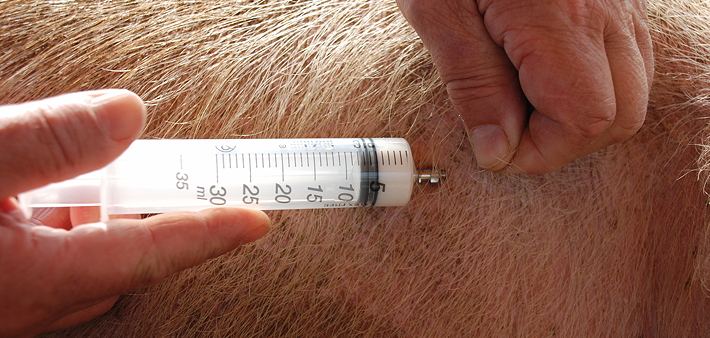Mandy Nevel is AHDB’s senior veterinary manager and a former lecturer at the Royal Veterinary College

Vaccines can have a big impact on production. However, I also know they are not a silver bullet to control all disease.
Importantly, how producers actually use them can, and does, make or break a vaccine. Companies spend millions getting vaccines onto the market and making sure they are safe and efficacious. So why do some vaccines work well and others not?
We know that vaccines work by stimulating an animal’s immune system and thereby protecting the animal from disease. How good that stimulation is depends not only on the vaccine itself but also on how the vaccine has been stored and used on farm. It is good practice to review your vaccine use as part of your herd health plan. A well-designed and executed plan will optimise a vaccine response resulting in health and productivity benefits – use your vet to advise on this.
Vaccines can be fragile and easily inactivated. Most need to be stored at 2-8°C. Freeze a vaccine and you’ll destroy it. Heat it in a microwave or hot water and it’s ruined. It’s good practice to use a max-min thermometer in your vaccine fridge, checking it daily.
Vaccines cost money so it surprises me how many farm fridges are discarded from the farmhouse kitchen – no longer suitable for the £100 weekly shop but still considered suitable for a £3,000 vaccine supply. Madness.
In summary, to optimise the response to a vaccine, you need: The right dose. Given to the right animal. At the right time. By the right route.
To do this, you need to:
- Regularly read the vaccine information (SPC);
- Know exactly how to administer it and whether repeat vaccinations should be given – and at what interval;
- Use injection equipment that is designed for the job and is well- maintained;
- Regularly change needles;
- Make sure you inject a clean area; and
- Use the correct sized needle (this will reduce risk of abscess formation and make the job easier).
Don’t make a difficult job harder by using poor equipment – because it is a difficult enough job already!
Allow adequate time to ensure that all animals that should be vaccinated actually receive a dose and make sure you have sufficient manpower to do it. Once done, take time to record use as it can be difficult to monitor effects. Moreover, if you do suspect a vaccine has failed, it is important to report it. Remember, vaccines aren’t miracles.
Look out this month for the RUMA #VaccinesWork campaign for more tips on how to get the best results with vaccinations.




